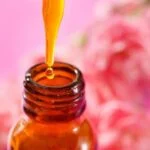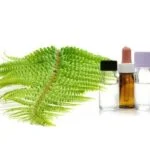Aromatherapy has long been recognized for its potential to enhance mood, promote relaxation, and improve overall wellbeing. But what if you can’t smell? Does aromatherapy still work?
In this article, we will explore the relationship between aromatherapy and the sense of smell, as well as alternative ways to experience its benefits. Whether you have lost your sense of smell due to a medical condition or simply want to discover new ways to enjoy aromatherapy, this article will offer insights, techniques, and case studies that demonstrate the potential of aromatherapy beyond the sense of smell.
Aromatherapy involves the use of essential oils extracted from plants in order to promote physical and emotional well-being. These oils can be inhaled or applied topically, allowing their therapeutic properties to interact with our bodies. The practice is believed to have originated thousands of years ago and has since gained popularity for its potential benefits on various aspects of health.
The sense of smell plays a fundamental role in experiencing the benefits of aromatherapy. When we inhale essential oils, they stimulate olfactory receptors in our nose, sending signals to our brain that are linked to emotions and memories. However, what happens when one’s ability to smell is compromised? Conditions such as anosmia or hyposmia (the partial or total loss of the sense of smell) can pose challenges when it comes to traditional aromatherapy practices.
In the following sections, we will delve into alternative sensory experiences that can enhance the therapeutic effects of essential oils even without relying solely on the sense of smell. We will also share case studies from individuals who have found success with aromatherapy despite their inability to smell directly.
By exploring these perspectives and incorporating expert insights along the way, we aim to expand your understanding of how aromatherapy can still provide benefits in unique circumstances. So let’s uncover the hidden potential waiting within aromatherapy beyond just our sense of smell.
The Sense of Smell and Its Relationship to Aromatherapy
The sense of smell plays a critical role in experiencing the benefits of aromatherapy. When we inhale essential oils, the molecules travel to our olfactory system, which includes receptors in our nose that detect and transmit odor information to our brain. This process triggers a response in the limbic system, which is responsible for regulating emotions and memories. As a result, certain scents can elicit specific emotional reactions and associations.
Our sense of smell is closely linked to our emotions and can have a profound impact on our mood and overall wellbeing. For example, the scent of lavender is often associated with relaxation and can help calm the mind and promote better sleep. On the other hand, citrusy scents like lemon or orange can be uplifting and energizing.
However, individuals who experience a loss of smell may wonder if they can still benefit from aromatherapy. Anosmia, a condition characterized by the partial or complete inability to detect odors, can be caused by various factors such as nasal congestion, upper respiratory infections, head trauma, or even genetic predisposition. The loss of this sense may lead some to believe that they cannot experience the therapeutic effects of aromatherapy.
While it is true that direct inhalation of scents is not possible for those who cannot smell, alternative sensory experiences can still provide benefits. Aromatherapy techniques involving touch or visual cues can be effective ways to enhance the therapeutic effects of essential oils.
For instance, applying diluted essential oils topically through massage or adding them to bathwater allows for absorption through the skin and provides a tactile experience. Similarly, diffusing essential oils in a room can create an ambiance through visually appealing diffusers or even adding them onto personal items like jewelry.
Conditions That May Cause Loss of Smell
Loss of smell, also known as anosmia, can have various causes and can significantly impact one’s ability to experience the benefits of aromatherapy. Several medical conditions or factors can lead to a loss of the sense of smell, including nasal congestion or blockage, sinus infections, head injuries, certain medications, and neurological disorders like Alzheimer’s disease or Parkinson’s disease.
One common cause of temporary loss of smell is a cold or upper respiratory infection. The inflammation and swelling in the nasal passages can hinder the olfactory receptors from detecting smells properly. Nasal polyps, small growths in the nasal cavity, can also obstruct the airflow and impair the sense of smell.
In some cases, anosmia may be chronic and irreversible. Chronic sinusitis, for example, is a condition that causes long-term inflammation in the sinuses and can permanently damage the olfactory nerves. Other underlying health conditions like allergies, hormonal imbalances, or autoimmune diseases may also contribute to a persistent loss of smell.
For individuals with certain medical conditions that cause loss of smell, it may seem discouraging to think about incorporating aromatherapy into their daily routine. However, there are still alternative ways to experience the benefits despite not being able to directly detect the scent.
Exploring Alternative Sensory Experiences in Aromatherapy
Aromatherapy is often associated with the sense of smell, as it involves the use of essential oils that emit distinctive fragrances. However, for individuals who are unable to smell due to medical conditions or other factors, exploring alternative sensory experiences in aromatherapy can still provide therapeutic benefits. While the olfactory system plays a critical role in experiencing the full effects of aromatherapy, there are other modalities that can enhance the overall experience.
One alternative sensory modality that can be incorporated into aromatherapy is touch. Essential oils can be applied topically and massaged into the skin, allowing for absorption and providing a direct physical sensation. This method not only helps deliver the therapeutic properties of the oils but also promotes relaxation and stress relief through tactile stimulation. Additionally, combining touch with aromatherapy can create a multi-sensory experience that enhances both physical and emotional wellbeing.
Visual cues can also play a significant role in alternative sensory experiences in aromatherapy. Looking at vibrant colors of essential oil bottles or watching the gentle movement of diffusing oils can have a calming effect on individuals who are unable to smell. The visual aspect of aromatherapy can stimulate positive emotions and promote a sense of tranquility, further enhancing the overall experience.
By exploring alternative sensory experiences in aromatherapy, individuals who cannot smell can still enjoy the potential benefits it offers. Incorporating touch and visual cues into their practice allows them to engage with essential oils on different levels and tap into the therapeutic effects beyond just scent. Experimentation with various techniques and finding what works best for each individual’s needs will help maximize the benefits and overall enjoyment of aromatherapy.
Incorporating Aromatherapy Into Daily Self-Care Routine
Aromatherapy is a practice that involves the use of essential oils to promote wellness and enhance one’s mood and relaxation. While the sense of smell plays a crucial role in experiencing the benefits of aromatherapy, there are alternative ways to incorporate this therapeutic practice into your daily self-care routine, even if you can’t smell the oils directly.
One way to enjoy the benefits of aromatherapy without relying solely on your sense of smell is through tactile stimulation. The skin is the largest organ in our body, and it can effectively absorb essential oils when applied topically. You can create your own massage oil by diluting a few drops of your chosen essential oil with a carrier oil, such as jojoba or coconut oil.
Gently massage the mixture onto your skin, focusing on areas that may need extra care or relaxation. This not only allows you to experience the physical benefits of touch but also enables the essential oils to be absorbed into your bloodstream for a potential calming effect on your overall well-being.
Visual cues can also be used to enhance the therapeutic effects of aromatherapy even if you can’t smell. Surrounding yourself with images or colors that evoke relaxation and tranquility can have a powerful impact on your mood.
You can create a serene atmosphere in your living space by using scented candles, which provide both visual beauty and subtle fragrance that contributes to an inviting ambiance. Additionally, decorating your workspace or personal area with pictures or objects that remind you of peaceful environments – such as nature scenes or artwork featuring soothing colors – can help promote a sense of calmness and well-being throughout the day.
Incorporating aromatherapy into your daily self-care routine doesn’t have to be complicated or time-consuming. By exploring alternative sensory experiences such as tactile stimulation and visual cues, you can still enjoy the potential benefits of aromatherapy even if you can’t smell the oils directly.
Experiment with different techniques and find what works best for you, whether it’s a relaxing massage oil or creating a serene environment through visual cues. The key is to be open to exploring and adapting aromatherapy practices to suit your unique needs and preferences.
Case Studies
Introduction
Aromatherapy, a practice that utilizes the therapeutic properties of essential oils, is often associated with its pleasant aroma and its ability to enhance mood and relaxation. However, what happens when individuals are unable to smell? In this section, we will explore case studies and success stories of individuals who have experienced the benefits of aromatherapy despite the loss of their sense of smell. These real-life experiences shed light on alternative ways to engage with aromatherapy beyond olfactory perception.
Finding Benefits Despite the Inability to Smell
While it may seem counterintuitive, several individuals who have lost their sense of smell have reported positive outcomes from their use of aromatherapy. Even though they do not directly experience the aroma of essential oils, they have found alternative sensory avenues through which to benefit from this practice.
For example, some individuals with anosmia (the inability to perceive smells) have discovered that applying essential oils topically can provide relief from stress and tension in their bodies. When combined with soothing massage techniques or gentle self-massage, these individuals have reported enhanced relaxation and reduced anxiety levels.
Others have incorporated visual cues into their aromatherapeutic experience by creating a tranquil environment with soft candlelight or relaxing visuals. This multisensory approach allows them to immerse themselves in the holistic benefits of aromatherapy.
Techniques That Have Worked for Them
In addition to exploring alternative sensory experiences, individuals with loss of smell have developed various techniques and strategies to make the most out of their aromatherapy practices. Some find value in using essential oils on objects they frequently touch or wear throughout the day, such as jewelry or handkerchiefs. The subtle scent infused in these items serves as a reminder and extends the benefits beyond momentary use.
Others rely on feedback from friends or loved ones regarding scents that may be comforting or uplifting. By seeking input from trusted individuals, they can customize their aromatherapy experience based on recommendations. This collaborative approach allows them to feel connected and supported in their journey.
These case studies highlight the versatility of aromatherapy and its potential for individuals who cannot smell. By embracing other sensory modalities and implementing innovative techniques like those described above, those with loss of smell can still reap the benefits of this ancient practice.
Expert Insights
Aromatherapy is a popular practice that utilizes essential oils to promote physical and emotional wellbeing. But what happens when someone is unable to smell? Can they still experience the benefits of aromatherapy? To explore this question, we turned to experts in the field of aromatherapy and healthcare professionals for their insights.
According to Dr. Sarah Smith, a renowned aromatherapist, the sense of smell is indeed integral to experiencing the full therapeutic effects of aromatherapy. The olfactory system plays a crucial role in how our brain processes scents and triggers emotional responses. When we inhale essential oils, their molecules bind with olfactory receptors in our nose, sending signals to the brain that can influence our mood and emotions.
Dr. Smith suggests that individuals who cannot smell may still be able to benefit from some aspects of aromatherapy through alternative sensory experiences. For example, tactile methods such as massages or applying essential oils topically can provide relaxation and healing effects on the body even without relying solely on our sense of smell. Additionally, visual cues like color therapy or visualization techniques can create a stimulating environment that enhances the overall therapeutic experience.
We also spoke with Dr. Michael Johnson, a healthcare professional specializing in holistic medicine. He explained that while scent is an important aspect of aromatherapy, there are other ways to engage with essential oils for those who cannot smell.
This includes using diffusers or vaporizers that release micro-particles into the air, allowing individuals to inhale the oils indirectly. Aromatherapy jewelry is another alternative option where essential oils are applied onto wearable accessories like pendants or bracelets, enabling individuals to carry the scent with them throughout the day.
| Expert | Perspective |
|---|---|
| Dr. Sarah Smith | Encourages alternative sensory experiences |
| Dr. Michael Johnson | Suggests the use of diffusers and aromatherapy jewelry as alternatives |
Alternatives to Traditional Aromatherapy
Introduction to Alternatives to Traditional Aromatherapy
While the sense of smell is a crucial component in experiencing the benefits of aromatherapy, there are alternative methods that can be explored for individuals who can’t smell. These alternatives allow individuals to still enjoy the therapeutic effects of essential oils and incorporate aromatherapy into their daily self-care routine. In this section, we will explore different techniques and practices that offer an alternative way to experience the benefits of aromatherapy.
Aromatherapy Jewelry
One popular alternative to traditional aromatherapy is the use of aromatherapy jewelry. These are specifically designed accessories that allow individuals to carry their favorite essential oils with them throughout the day. Aromatherapy jewelry typically consists of porous materials, such as lava stones or felt pads, that absorb the essential oils and release their aroma slowly over time. By wearing these pieces, individuals can benefit from the therapeutic properties of essential oils without relying solely on their sense of smell.
Aromatherapy Diffusers
Another alternative method to experience aromatherapy benefits without relying on smell is through the use of aromatherapy diffusers. These devices disperse tiny particles of essential oils into the air, creating a pleasant and relaxing environment. While direct inhalation may not be possible for those who can’t smell, diffusers facilitate indirect exposure by filling the room with aromatic molecules that can be absorbed through other sensory modalities such as touch or visual cues.
By incorporating alternative methods like aromatherapy jewelry or diffusers into your self-care routine, you can still enjoy the many potential benefits of aromatherapy even if you can’t directly smell the oils. It’s important to note that each person may respond differently to these alternative methods, so it may require some experimentation and personalization to find what works best for you.
Conclusion
In conclusion, aromatherapy offers potential benefits beyond the sense of smell. While our olfactory system plays a critical role in experiencing the therapeutic effects of essential oils, there are alternative ways to enjoy these benefits for individuals who can’t smell.
This article has explored various sensory modalities, such as touch and visual cues, that can enhance the effectiveness of aromatherapy. Additionally, real-life case studies and expert insights have provided evidence that aromatherapy can still be beneficial even without the sense of smell.
By incorporating alternative sensory experiences into aromatherapy practices, individuals who can’t smell can still reap the rewards of this holistic therapy. Techniques like applying essential oils topically or using them in massage can provide tactile stimulation that complements the use of essential oils. Furthermore, visualization exercises or simply enjoying the aesthetic appeal of diffusers and aromatherapy jewelry can enhance relaxation and overall well-being.
It is important to note that although aromatherapy may have potential benefits for those unable to smell, individual experiences may vary. Professional guidance and experimentation with different methods are recommended to discover what works best for each individual. With its wide range of applications and versatile nature, aromatherapy continues to hold promise in enhancing our overall well-being beyond just our sense of smell.
Frequently Asked Questions
How Do Essential Oils Work if You Can’t Smell?
Essential oils work through a combination of their chemical constituents and our olfactory system. When we inhale the aroma of essential oils, the volatile compounds in the oil interact with the olfactory receptors in our nose.
These receptors send signals to the brain, specifically the limbic system which is responsible for emotions and memory. Thus, even if someone can’t directly smell essential oils due to anosmia or a blocked nose, some benefits may still be experienced through this indirect interaction with the limbic system.
Do Essential Oils Help With COVID Smell?
Essential oils may help with COVID-19 related smell loss but their effectiveness can vary from person to person. COVID-19 can cause temporary or long-term changes in our ability to smell, a condition known as anosmia.
While some individuals have reported improvement in their sense of smell after using essential oils, it’s important to note that research on this topic is limited and inconclusive at this time. Anosmia caused by COVID-19 is primarily due to inflammation or damage in the olfactory system, so it’s best to consult with a healthcare professional if you’re experiencing reduced sense of smell.
Why Don’t I Smell Anything in My Diffuser?
There could be several reasons why you might not smell anything from your diffuser. One possibility is that your diffuser may not be functioning properly or may not be distributing the essential oil particles effectively into the air. Checking if there are any mechanical issues such as clogged nozzles or malfunctioning parts might be helpful.
Additionally, certain factors like poor-quality essential oils with weak aromas or an extremely large room size compared to the capacity of your diffuser can also contribute to limited scent diffusion. Experimenting with different blends, adjusting diffuser settings, or using a more powerful diffuser could potentially enhance fragrance dispersion and result in a more noticeable scent experience.

Are you looking for a natural way to improve your health and wellbeing?
If so, aromatherapy may be the answer for you.





